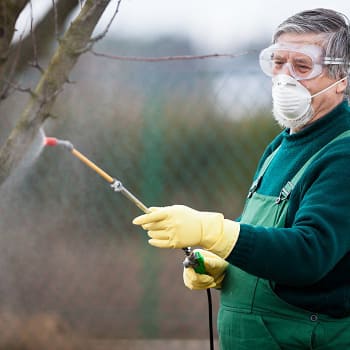Two types of diseases include:
- biotic diseases
- abiotic diseases
Pathogens: A pathogen is an agent that causes disease (“path”-“gen”). It can be living (fungus) or non-living (pollutant). In common parlance, it is often used just to mean living agents. The term doesn’t really apply to deficiencies. Here are the main kinds of biotic pathogens:
- virus/viroid
- phytoplasmas
- bacteria
- nematodes
- fungi
- flowering plants

One of the most important components of a home landscape program is protection of trees and shrubbery from disease pests.
Unfortunately, landscape plants are vulnerable to attack by a wide range of diseases caused primarily by fungi, bacteria, viruses, and nematodes, which are referred to as biotic agents of plant disease
Most disease-causing agents are microscopic, which means that homeowners won’t see the microorganisms which cause blights, leaf spots, and other problems on their azaleas, roses, hollies, oaks, maples, and other plants which are popular in southern landscapes.
Although these pests are small in size, the damage they cause is often quite visible, and detracts from the beauty of the home landscape.
In some cases, when susceptible plants are planted, or conditions are favourable for disease development, plants are killed by diseases.
In addition to the biotic agents of disease, trees and woody ornamentals are also frequently affected by non-parasite disorders (abiotic agents of disease), such as injuries caused to trees during home and driveway construction, compaction of soil around roots, or poor growing conditions brought on by extended periods of drought or too wet or cold weather.
Although landscape plants are vulnerable to biotic and abiotic agents of disease, this doesn’t mean a healthy landscape isn’t possible.
Most plant health problems can be prevented, provided home landscapers become more knowledgeable of diseases, and recognize that problems can be prevented provided precautionary steps are taken to prevent parasitic and non-parasitic disease development.





